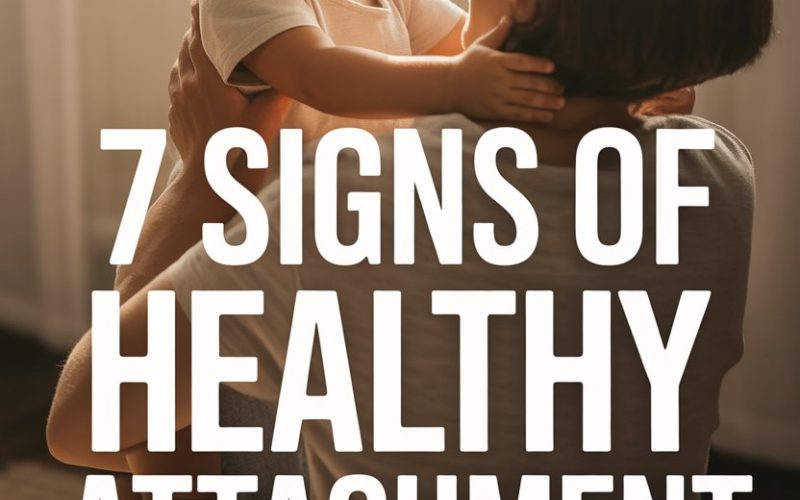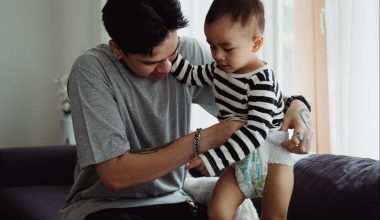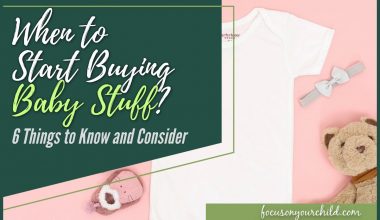We all want to raise happy, well-adjusted kids, but the toddler years can feel like a never-ending game of “Guess What’s Wrong Now?”
From shoes that suddenly feel “too socky” to an inexplicable fear of lumpy mashed potatoes, two-year-olds test your detective skills daily.
But beneath the daily drama and soggy Cheerios lies something hugely important: your toddler’s sense of security.
Attachment isn’t just about snuggly moments or how often your little one clings to your knees. It’s the invisible bond that helps your child feel safe enough to explore—and brave enough to come back for cuddles when the world gets too big.
Here are the seven signs you can look for that hint your toddler’s attachment is healthy (and some ways to nurture it even further, no PhD required).
1. Seeks Comfort from You When Upset
When life serves up its inevitable toddler indignities (someone stole his pebble, the biscuit snapped in half, the neighbour’s cat looked at him funny), does your child look to you for comfort? That’s a very good sign.
Research on attachment theory, pioneered by John Bowlby and Mary Ainsworth, shows that securely attached toddlers use their parent or caregiver as a “safe base” for comfort during times of stress.
If your little one runs into your arms after a tumble or wants you nearby while braving the doctor’s office, she’s demonstrating trust in your ability to soothe and protect her.
Does this mean you’ll never face a nuclear meltdown in public again? Ha. Not likely. But it does mean your presence is doing its magic—even if your cuddles are met with a chorus of “No!” followed by snotty snuggles.
What you can try: Next time your child is upset, get down to their level, offer a calm presence, and hold them if they want it. Sometimes, that’s all the “fixing” required.
2. Shows Joy When Reunited
Ever been greeted by an open-mouthed, full-body toddler sprint upon returning home—even after just 15 minutes out? That enthusiastic welcome is more than adorable; it’s a hallmark of secure attachment.
The reunion ritual, as explained in the Strange Situation experiments, demonstrates your child’s confidence that you’ll return, and that your return is a good thing.
Securely attached toddlers often express delight, relief, or excitement when they see their parent again after a separation.
Of course, some kids play it cool or are more reserved, but you’ll likely spot a change in posture, a big grin, or maybe just a shy little wiggle. Each child shows joy in their own way.
What you can try: Announce your return (“I’m back!”), open your arms, and mirror your child’s excitement. These rituals build trust and connection—plus, they’re a surefire mood-boost after a long day.
3. Explores Freely While Checking In
Picture this: You’re at the playground. Your toddler charges off to conquer the scary slide, but keeps glancing over to make sure you’re watching.
Maybe she brings you a worm, or races back for a quick cuddle before dashing off again.
Securely attached toddlers are little scientists, eager to explore, but they check back with their “base camp” (that’s you). This “social referencing” is a sign that your child feels safe venturing out, but trusts you’re there if things get dicey.
One study published in Child Development found that toddlers with secure attachments explore more confidently and recover better from upsets.
In short: a confident wanderer who occasionally boomerangs back for reassurance is a well-attached kid.
What you can try: Stay present and attentive, but let your toddler lead the pace and direction of play. A watchful eye and an encouraging word go further than you think.
4. Uses You as a Social Reference
There’s nothing quite like that moment when your toddler faces something new (a dog, a loud balloon, Aunt Edna’s dazzling lipstick) and looks to you for a cue: Is this fun? Is it safe? Should I run for the hills?
This social referencing is a cornerstone of attachment. By checking your facial expressions and reactions, your child learns how to interpret the world.
A secure attachment means your child trusts your judgment—and your “It’s ok, mate” smile goes a long way.
Psychologist Susan C. Johnson’s work on social referencing confirms that toddlers with secure attachments are more likely to seek out and trust their caregiver’s input, especially when uncertainty looms.
What you can try: When your little observer checks in, offer calm and encouraging cues. A reassuring “Look at that lovely doggy!” or “That balloon’s loud, but it’s just making silly sounds” helps your child navigate the unknown.
5. Expresses a Full Range of Emotions
Toddlers are emotional over-sharers. But a healthy range of feelings—joy, anger, frustration, sadness, excitement—signals a secure attachment.
Kids who feel safe show you their whole emotional rainbow, not just the polite bits.
If your child is comfortable showing you her happiest giggles and her ugliest tantrums, it means she trusts you’ll love her through all of it. She isn’t policing herself to protect you from her “big feelings.”
Attachment specialist Dr. Daniel Siegel notes that emotional expression is key for brain development and future relationships. Children who feel secure are better at regulating their emotions down the line.
What you can try: Validate all feelings, not just the sunny ones. “You’re really mad about leaving the park. I hear you.” This doesn’t mean giving in, but acknowledges their feelings are safe with you.
6. Recovers Relatively Quickly from Distress
Every parent has faced a meltdown that seems to last longer than an episode of Bluey. But when a child is securely attached, they’re often able to calm down with your help—even if the drama was Oscar-worthy at first.
Securely attached toddlers will typically seek support, accept comfort, and recover from upsets more quickly than those with less secure bonds, as described in research from the Harvard Center on the Developing Child.
That doesn’t mean they won’t lose the plot occasionally (toddler logic is undefeated), but your presence helps them regain their composure.
What you can try: Offer steady, patient support. If your child wants a hug, give one; if they need a quiet moment, sit nearby. Your calm is contagious—eventually.
7. Shows Affection in Age-Appropriate Ways
Some toddlers are snugglers; others show love by bringing you a rock they found in the garden (how romantic). Whatever your child’s style, affection is a clear sign of a strong bond.
A securely attached child offers connection: hugs, kisses, pats, or simply plopping down with their favourite book in your lap.
They may show preference for your company over others or seek out special rituals with you—bedtime stories, silly dances, pat-a-cake marathons.
Attachment researchers observe that these affectionate gestures, even the creative ones (“Please accept this soggy biscuit, my love”), are trust in action.
What you can try: Respond warmly, even if your gifts involve garden snails. Special moments, no matter how tiny or slimy, reinforce your child’s sense of belonging.
When the Signs Aren’t Obvious
Not every securely attached toddler fits these patterns perfectly. Some kids are more reserved, others are independent to the point of baffling, and every child has off days (don’t we all?).
If your child isn’t a champion cuddler or races off without a backward glance, it doesn’t necessarily mean trouble.
Look for the little moments: a quick check back, a soft touch, or the way your child lights up when you sing their favourite song.
If you’re worried, or if your child seems unusually withdrawn, fearful, or slow to recover from stress, a chat with your GP or a child psychologist can help. There’s no shame in asking for backup—raising small humans is not a solo sport.
Attachment Isn’t About Perfection
Here’s a little secret psychologists have been keeping: you don’t need to be a perfect parent to raise securely attached children. In fact, research by Dr. Donald Winnicott suggests that being “good enough” is, well, good enough.
The real magic is in the ordinary moments—responding to your child’s needs, offering cuddles, sharing a laugh, surviving the day with everyone (mostly) fed and clothed.
Missed cues, grumpy days, and the odd parenting flop won’t ruin your child forever. What matters is coming back—repairing, reconnecting, and showing up as best you can.
So tonight, when your toddler wants a cuddle at midnight or hands you a half-eaten apple as a token of love, take heart. Those small acts are building blocks of a healthy bond, one quirky, beautiful moment at a time.
And if you’re reading this with one hand while cradling a sleepy tot with the other?
You’re already doing the most important thing—being there.





